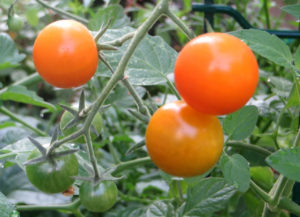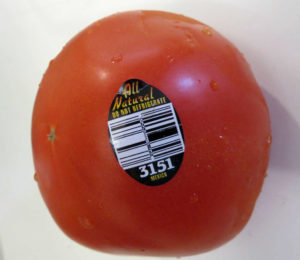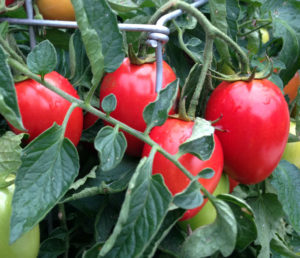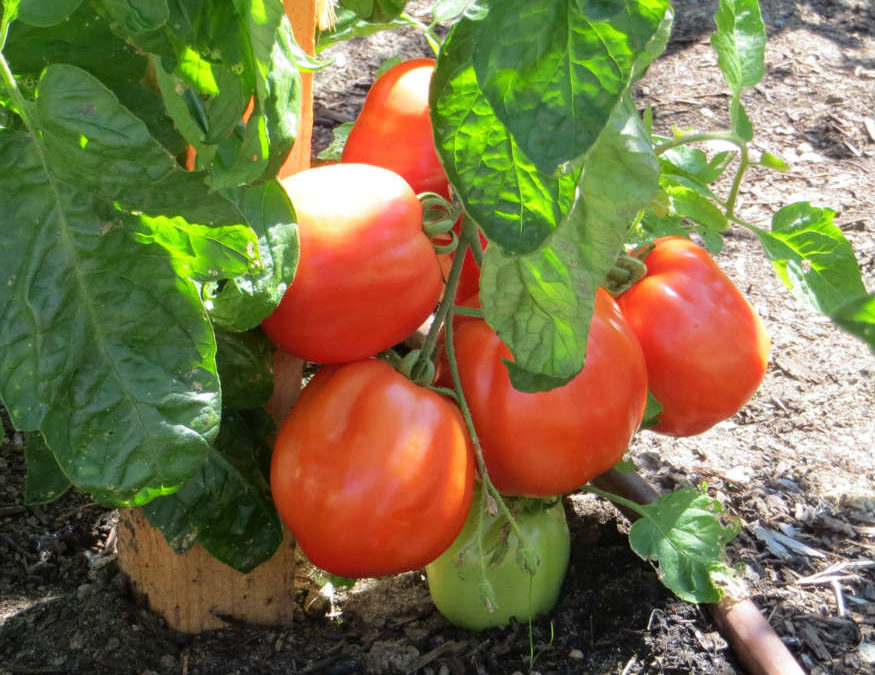Growing up in Connecticut, tomatoes were “to die for.” From the end of April to the beginning of June, nature’s winter cloaks were summarily discarded and summer’s heat quickly arrived. May was a time of massive seasonal transition. The last vestiges of cold nights ended, trees seemed to go from bud to full leaf in just one mid-May day, and setting tomato plant starts was a top priority by Memorial Day weekend, to ensure the first cherry-sized bursts of succulent sunshine by the 4th of July. There was something about the heat, the soil, and the rain, that created the tomato of childhood memories. After biting through the tender skin, we slurped the juice from the mouthwatering pulp. Adding just a little bit of salt and cut up chives over a plate of sliced baseball-sized orbs created a sweet and savory treat my family enjoyed every late summer dinner.
Can I still get that powerful, luscious tomato flavor from my childhood? Or is it only a dream? Is it just childhood untainted taste buds that imagined a flavor brimming with complexity?
Tomatoes are available year around in Seattle markets, but never measure up to my childhood recollection. Have tomatoes undergone a transformation to a bland, rock hard, perfectly-shaped red spheres?
How did today’s tomato evolve?
Tomatoes were first domesticated by the Mayans in southern Mexico or northern Central America. By 1521, when Cortes conquered the Aztecan city, now named Mexico City, the native people already combined tomatoes, hot peppers, and salt, into a concoction now known as salsa.
By the late 16th century, the tomato was found on Italian soil, where it was woven into the region’s food culture. Soon after American colonists integrated tomatoes into their meals despite some thinking the orbs were poisonous. However, in the U.S., it wasn’t until the Civil War, that consumption spiked with tomato’s acidity benefiting from new canning technology allowing long-term food storage. The Union troop’s easily carried canned tomatoes, perhaps benefiting the outcome of the war. By 1880, schooner powered trade flourished between Havana, Cuba and east coast ports bringing summer produce to city folk yearning for a change from the repetitive potatoes, beets, and other winter root fare.

My own cherry tomatoes!
Farmers, threatened by the imported food, had political clout and fought back. They wanted to grow the produce on U.S. soil, knowing the northern cities were a huge winter market to satiate with delectable warm weather crops! The fight became so fierce that ultimately the U.S. Supreme Court determined that the tomato could be protected by tariffs provided it was classified as a vegetable. Biologically, the edible sweet and fleshy product of a plant with seeds is a fruit! In keeping with politics, the Supreme Court ruled that since tomatoes are served with vegetables, it should be classified as such. Never mind the biological criteria! This monumental high court decision triggered Florida’s entrance into winter time tomato production, so well told in Barry Estabrook’s Tomatoland, How Modern Industrial Agriculture Destroyed our Most Alluring Fruit. U.S. farmers no longer had to worry about imported tomatoes, because vegetables (and not fruits) were tariff protected.
Florida: The Fresh Tomato Market

The All Natural Mexican Tomato Orb
From mid-October until June, the southern half of Florida “produces virtually all the fresh-market, field-grown tomatoes in the U.S…, and accounts for about 50% of all fresh tomatoes produced domestically” according to the Florida Tomato Committee, the controller of Florida’s tomato production. Floridian tomatoes are basically grown in sand, devoid of topsoil, hummus, and nutrients found in the rich bottom-land soils of fertile farmground. Instead the plants are fed chemical fertilizers and blasted “with more than 100 different herbicides and pesticides, including some of the most toxic in agribusiness’s arsenal,” as documented by Barry Estabrook. These chemical concoctions not only “feed” and “protect” the tomato, but also expose the farmworkers to excessive chemical contamination causing extensive health problems.
Eventually, the tomatoes are hand-picked green, with no more than a hint of pink to be carted in open-top semi trucks [think six feet deep with no dented or bruised spheres], for washing and sorting into boxes. Crates of tomatoes are gassed in ethylene-filled rooms for “ripening,” before being shipped to markets. Last fall visiting the Tomato Division of Armata Fruit & Produce in the Bronx, I watched pale-red tomato orbs bounce (not roll) down a conveyor belt, while being electronically scanned for color and swept by a mechanical arm into boxes for final “ripening.” These tomatoes are designed to travel long distances, unscathed, and to allure us with their red color. The “look” of the red tomato is intended to trick us into thinking it will taste good!
What’s an alternative?

My own San Marzano Roma tomatoes
Wait for tomatoes to be in season! Garner the ultimate tomato experience by shopping at the farmer’s market or growing your own! Tomatoes get their flavor from the seed, the sun, the heat, the water and the soil and its micronutrients–creating the terroir or sense of place–of the ultimate fruit (or do I mean vegetable).
Most importantly and no matter the tomato, it should never be refrigerated! Sit it on a counter, stem side up, so as to not bruise its shoulders. Even the winter traveling tomato from Mexico or Florida should may even taste a little better without being refrigerated!
For the best tasting tomato, try growing your own! With our ever increasing summer heat, tomatoes will become easier to grow. “How to grow tomato” websites can be found at Gardeners Supply, PCC Natural Markets, the Seattle-based food cooperative, and the Cheap Vegetable Gardener. I grow Stupice–a two inch diameter slicer, Sweet Million–a cherry, and San Marzano–a Roma, salsa-making tomato all perfect for my northeast facing lot that is in shadows by 4 p.m. on hot summer days. My childhood tomato memories live on!
Kathryn Gardow, P.E., is a local food advocate, land use expert and owner of Gardow Consulting, an organization dedicated to providing multidisciplinary solutions to building sustainable communities. Kathryn has expertise in project management, planning, and civil engineering, with an emphasis on creating communities that include food production. Kathryn is a Washington Sustainable Food and Farming Network board member. Kathryn’s blog muses on ways to create a more sustainable world.


My understanding is that tomatoes need warm nights (above 70) to really develop full flavor and thin skins. If nights are low 60s or below the skins stay thick and tough for protection from the cold. Midwest and east coast tomatoes have warm nights, thin skins, great flavor — think of better boy. etc. But out here in the PNW I finally will grow sun golds and brandywine which at least have the best flavor for out here
That makes sense for why tomatoes don’t quite taste as good out here. Last summer our night time temperatures were warmer, so perhaps it will be the same this summer? It will make it tougher for sleeping though!
I loved this post! The first paragraph, in particular, was just lovely. I too have a garden that is shady after 4 pm and am always trying different tomato varieties that will thrive in Seattle. Keep up the great work!